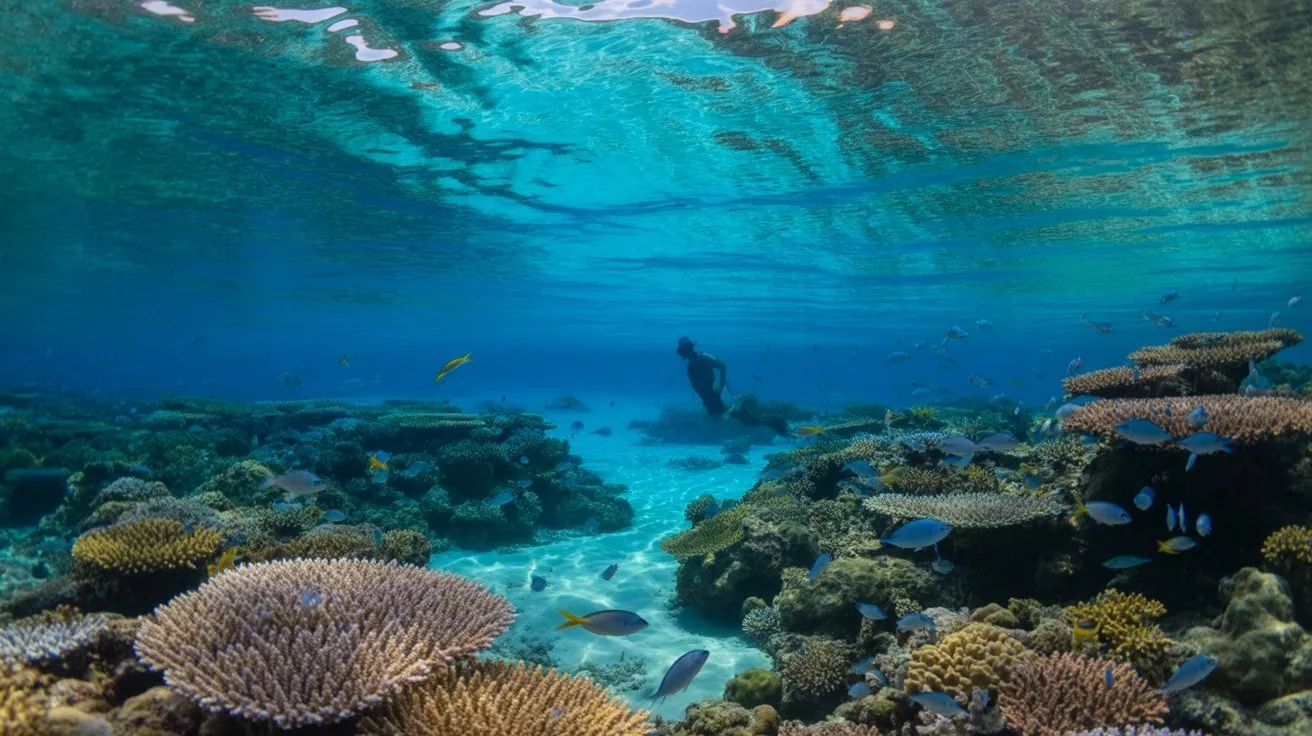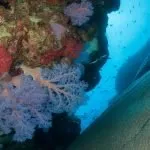You can’t legally snorkel at 95% of the Great Barrier Reef due to strict marine protection zones, yet specific accessible sections still harbor over 400 coral species and 1,500 fish varieties. While climate change has triggered three mass bleaching events since 2016, targeted reef systems worldwide continue supporting critical biodiversity hotspots where you’ll encounter intact ecosystems. These carefully managed sites demonstrate successful conservation metrics, but choosing the right location requires understanding current coral health data and seasonal marine conditions.
Great Barrier Reef, Australia
Spanning over 2,300 kilometers along Queensland’s coast, the Great Barrier Reef represents the world’s largest coral reef system, comprising approximately 2,900 individual reefs and 900 islands.
You’ll encounter 1,500 fish species, 400 coral species, and 4,000 mollusk varieties across its diverse ecosystems. However, you’re witnessing a critically threatened environment—rising ocean temperatures have triggered three mass bleaching events since 2016, affecting 75% of the reef’s northern sections.
When you snorkel here, you’re experiencing biodiversity hotspots like the Coral Triangle’s eastern boundary. Water temperatures range 21-29°C year-round, with visibility extending 15-30 meters during ideal conditions.
Choose locations like Heron Island or Lady Elliot Island, where restoration efforts actively combat coral degradation. Your visit supports marine conservation programs essential for this UNESCO World Heritage site’s survival. Protecting coral reefs helps maintain a healthy ocean environment and the biodiversity that thrives within them.
Hanauma Bay, Hawaii
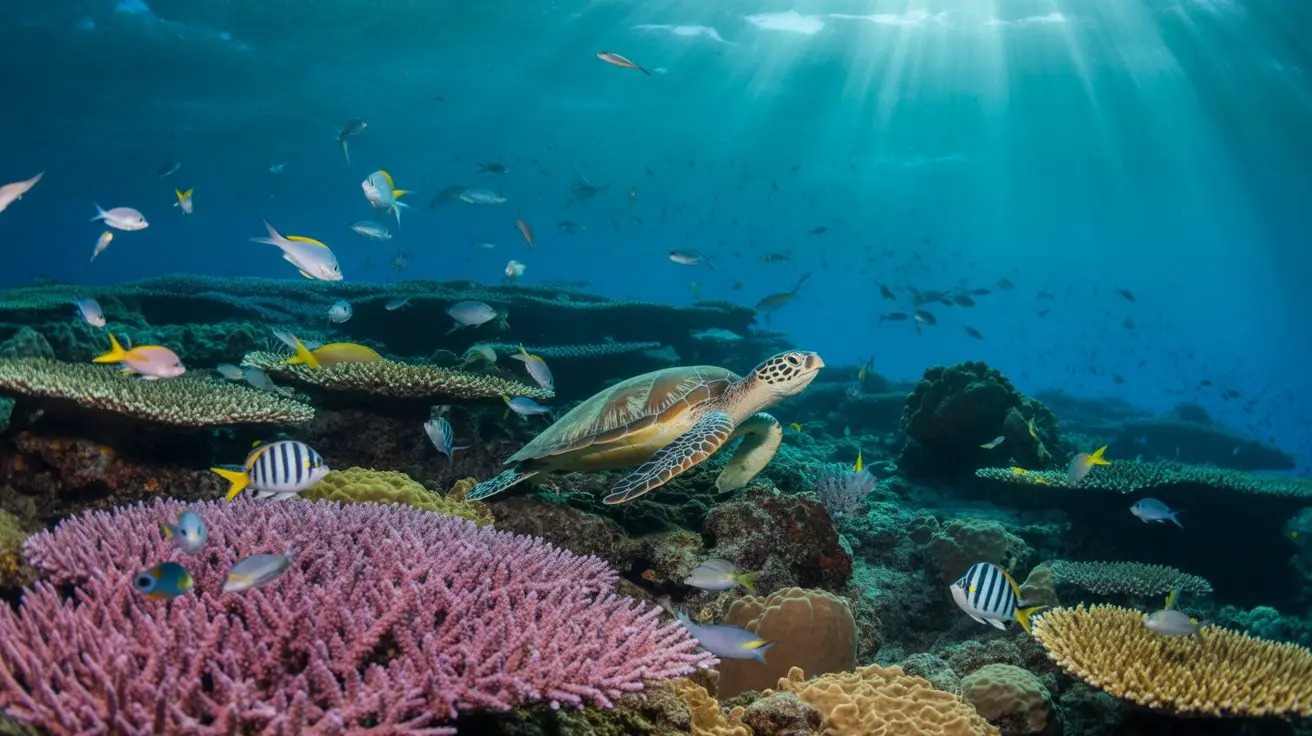
Formed within an ancient volcanic crater 32,000 years ago, Hanauma Bay Nature Preserve shelters over 400 fish species within its protected 101-acre marine ecosystem on Oahu’s southeastern coast.
You’ll encounter endemic Hawaiian fish like humuhumunukunukuapua’a (reef triggerfish) and yellow tangs in visibility reaching 150 feet. The bay’s unique geological formation creates calm, shallow waters averaging 6-12 feet deep, making it ideal for beginner snorkelers.
Since becoming a nature preserve in 1967, strict conservation protocols limit daily visitors to 1,400 people.
You’re required to complete a nine-minute educational video before entry, and feeding fish carries a $500 fine.
The preserve’s coral restoration programs have successfully reestablished 85% of damaged reef areas through active management and visitor education initiatives. Coral reefs are complex ecosystems that depend on healthy environmental conditions, underscoring the importance of conservation efforts like those at Hanauma Bay.
Molokini Crater, Maui
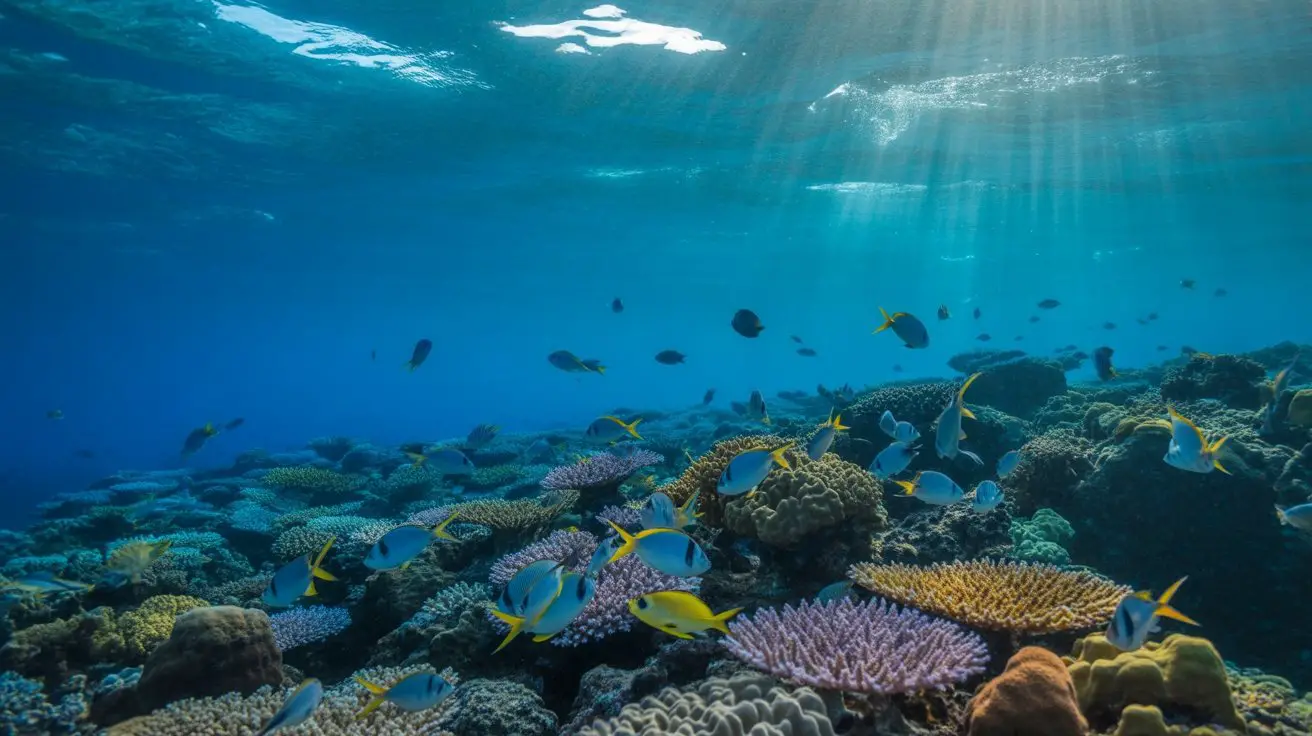
Rising dramatically from depths of 300 feet, this crescent-shaped volcanic caldera sits 2.5 miles off Maui’s southwestern coast and hosts over 250 marine species within its crystal-clear waters.
You’ll encounter visibility exceeding 150 feet due to Molokini’s unique geological formation, which blocks oceanic currents and sediment flow. The crater’s protected leeward side maintains water temperatures between 75-80°F year-round.
You’re snorkeling in a Marine Life Conservation District where fishing’s prohibited, allowing fish populations to thrive undisturbed. Endemic species like Moorish idols, yellow tangs, and parrotfish flourish here.
However, you’re contributing to overtourism pressure—over 300,000 visitors annually impact this fragile ecosystem. Choose eco-certified tour operators who enforce reef-safe sunscreen policies and maintain proper distances from marine life to preserve this volcanic sanctuary’s biodiversity. Additionally, coral reefs act as essential habitats for countless marine organisms, ensuring the overall health of ocean ecosystems.
Coral World, US Virgin Islands
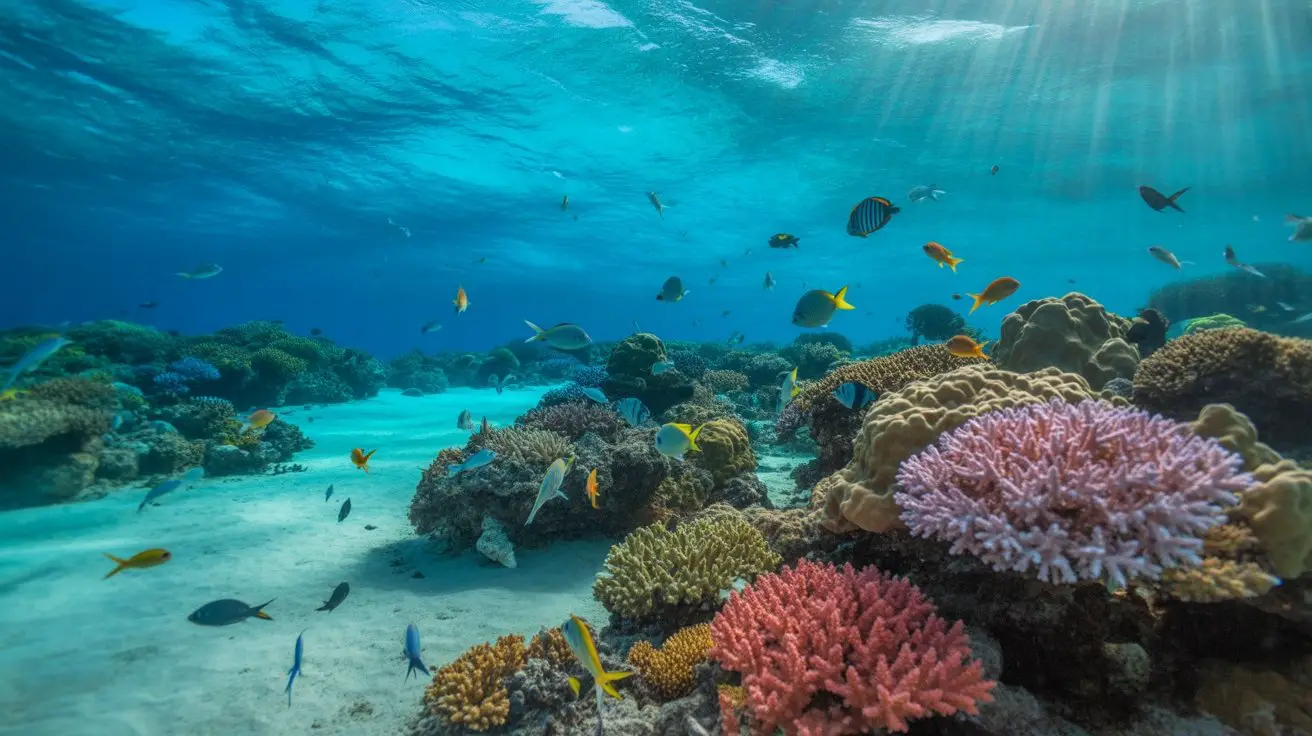
Beneath St. Thomas’s crystalline waters, you’ll discover Coral World’s protected marine sanctuary spanning 3.5 acres of pristine reef ecosystem. This conservation-focused facility maintains water temperatures at 78-82°F year-round, supporting over 200 documented coral species and 400+ tropical fish varieties.
| Parameter | Measurement |
|---|---|
| Visibility Range | 80-120 feet |
| Maximum Depth | 35 feet |
| Coral Coverage | 65% live coverage |
| Species Diversity | 200+ coral types |
You’ll encounter endangered elkhorn corals (Acropora palmata) undergoing active restoration efforts. Scientists monitor pH levels (8.1-8.3) and dissolved oxygen concentrations to guarantee ideal conditions for reef regeneration. The facility’s controlled environment eliminates boat traffic damage while providing vital research data for Caribbean reef conservation. Your snorkeling experience directly funds marine research programs protecting these vulnerable ecosystems from climate-induced bleaching events. Additionally, the presence of healthy predator populations helps maintain the overall health of the reef ecosystem, ensuring its resilience against predatory behaviors.
Palancar Reef, Cozumel
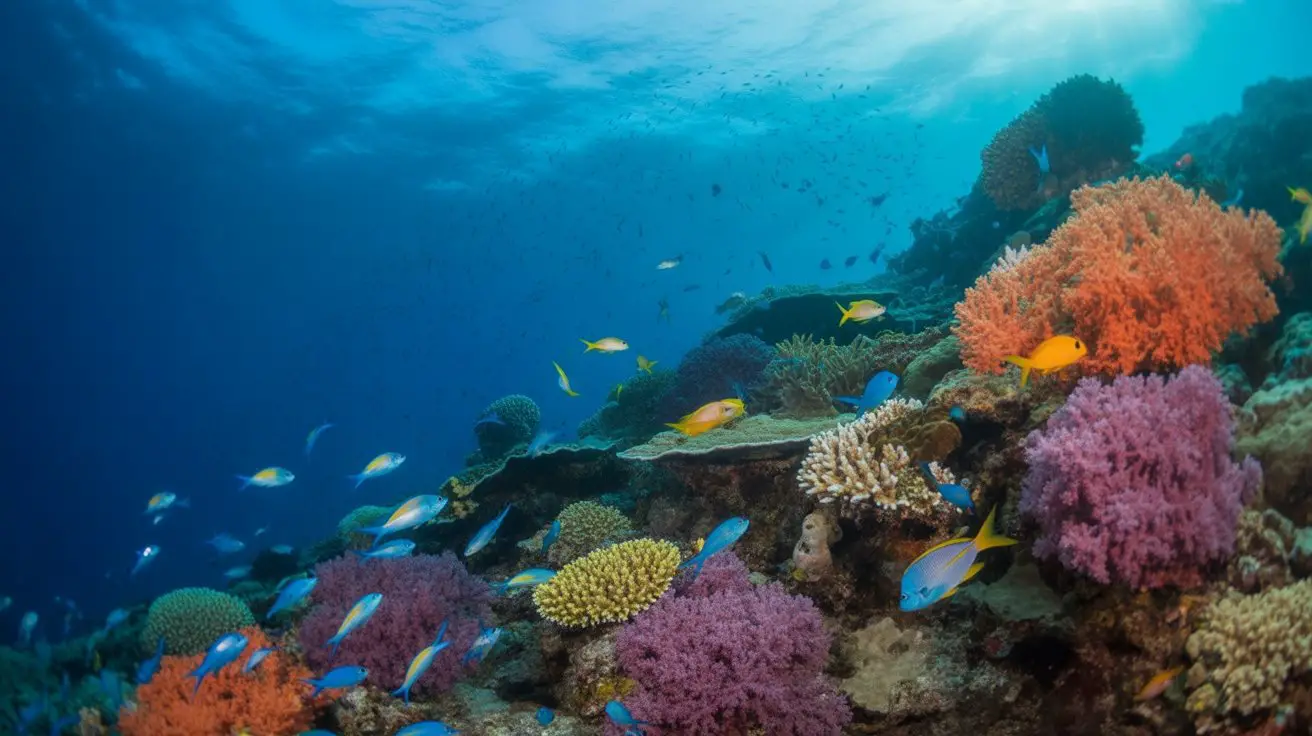
While conservation efforts thrive in controlled environments like Coral World, Cozumel’s Palancar Reef showcases nature’s unrestrained magnificence across 3.1 miles of Mesoamerican Barrier Reef system.
You’ll encounter pristine coral formations at depths ranging 30-130 feet, with snorkeling zones maintaining ideal 15-40 foot visibility ranges.
This UNESCO World Heritage candidate supports 65+ coral species and 500+ fish varieties.
You’ll observe healthy populations of:
- Elkhorn and staghorn corals – Critical reef-building species showing 23% recovery rates
- Queen angelfish and parrotfish – Essential herbivores maintaining algae-coral balance
- Splendid toadfish – Endemic species found nowhere else globally
Cozumel’s marine protected area status since 1996 demonstrates measurable conservation success. Additionally, coral reefs are vital ecosystems that provide habitat for a quarter of all marine species.
Water temperatures remain consistently 78-84°F year-round, while minimal human impact preserves ecosystem integrity you won’t find elsewhere.
Rainbow Reef, Fiji
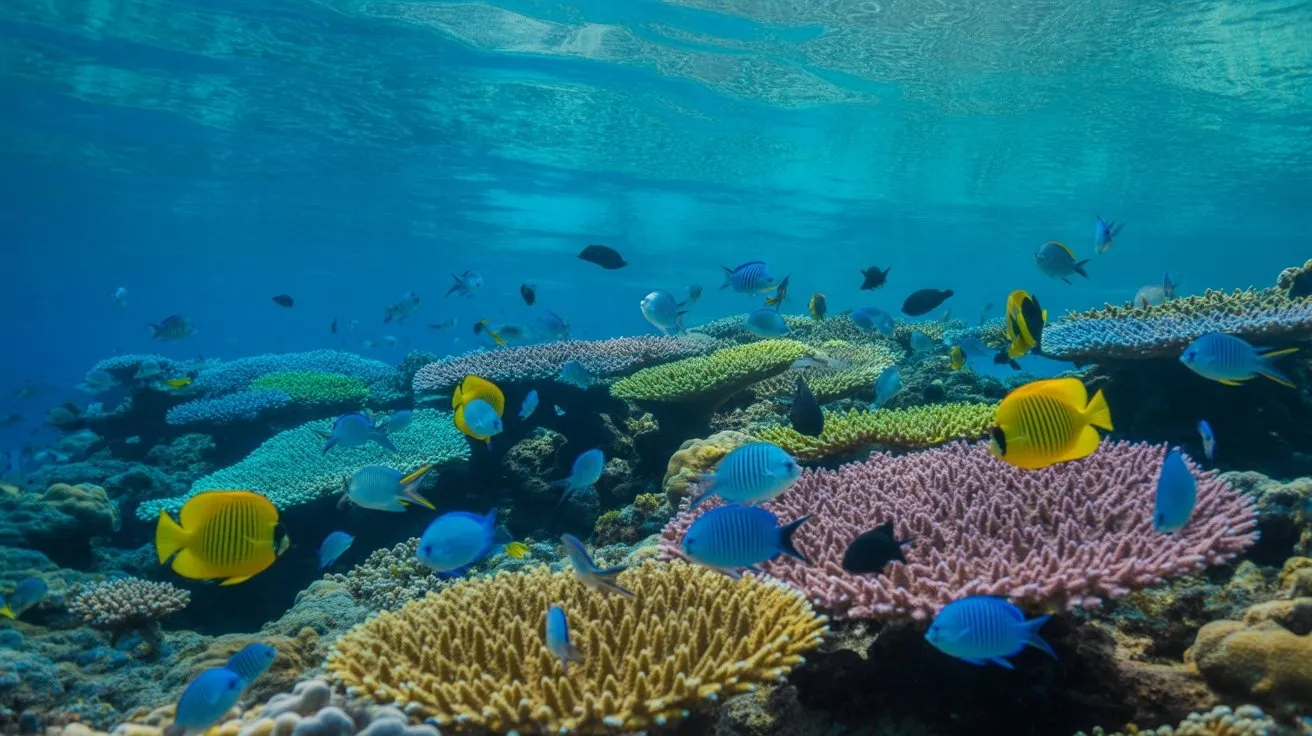
Twenty-seven miles of pristine soft coral gardens stretch across Fiji’s Rainbow Reef, earning recognition as the “Soft Coral Capital of the World” through documented biodiversity indices exceeding 1,200 marine species per square kilometer.
You’ll encounter ideal visibility conditions ranging 80-120 feet, facilitating observation of endemic species including Pseudanthias pascalus and Cirrhilabrus lineatus. The reef’s nutrient-rich currents support extensive Dendronephthya colonies displaying vibrant purple, orange, and yellow pigmentation.
You’re accessing critical habitat supporting 42% of Indo-Pacific soft coral species within this Marine Protected Area. Conservation protocols require reef-safe sunscreen and prohibited coral contact.
Peak snorkeling conditions occur during May-October dry seasons when water temperatures stabilize at 26-28°C. You’ll contribute to citizen science monitoring programs documenting climate resilience patterns across this UNESCO-recognized biodiversity hotspot. Additionally, the reef plays a vital role in providing shelter for countless marine species that rely on its structure for habitat and food.
Ningaloo Reef, Western Australia
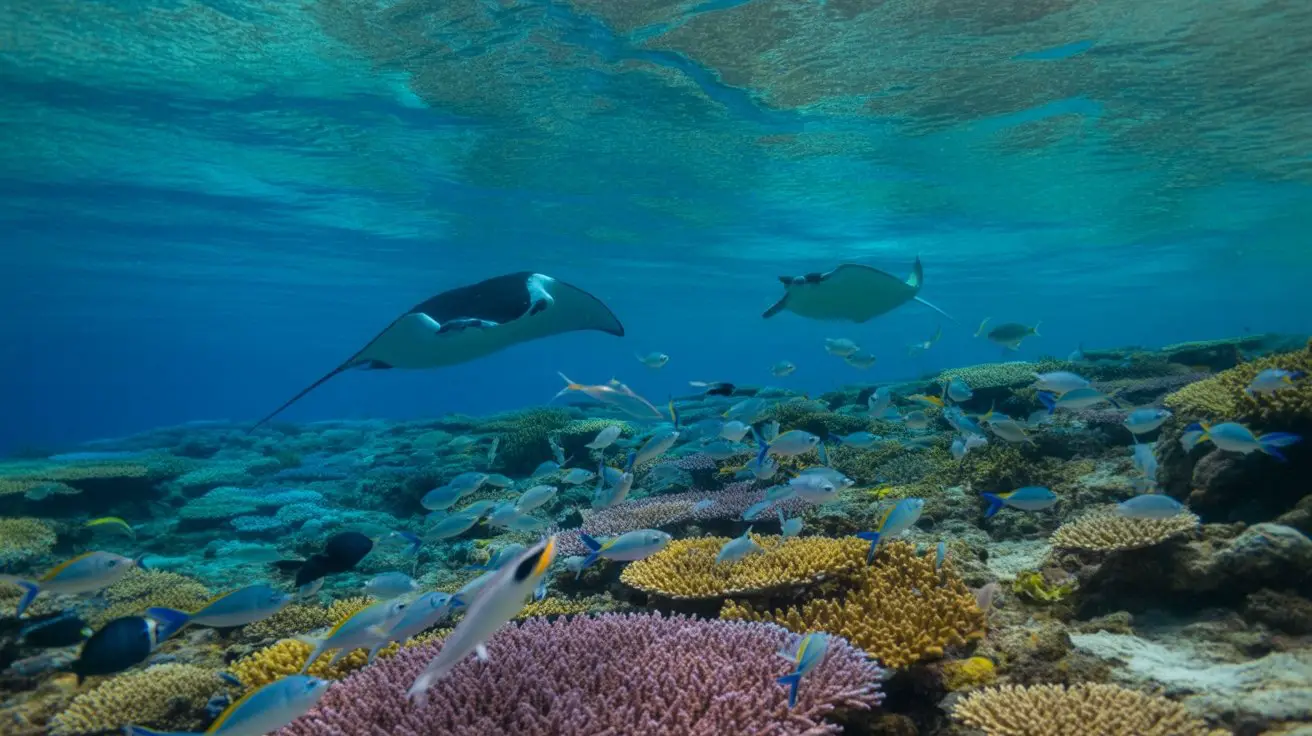
Stretching 260 kilometers along Western Australia’s coast, Ningaloo Reef represents the world’s largest fringing reef accessible directly from shore, with documented coral coverage exceeding 38% across its 5,000 square kilometer expanse.
You’ll encounter pristine biogeographic diversity here, with 220 hard coral species and 500+ fish species thriving in nutrient-rich Leeuwin Current waters. This UNESCO World Heritage site maintains exceptional ecological integrity through strict zoning regulations limiting visitor numbers.
- Whale shark aggregations: April-July brings predictable encounters with these 12-meter filter-feeders
- Coral spawning events: Mass spawning occurs 7-10 days after March/April full moons
- Endemic species hotspot: 36% of fish species show regional endemism levels
You’re accessing a reef system where water temperatures remain 22-25°C year-round, supporting consistent snorkeling conditions while preserving critical marine habitats through thorough management frameworks. Additionally, Ningaloo Reef plays a vital role in biodiversity and habitat by supporting diverse marine life, showcasing the importance of coral reefs in maintaining ocean health.
Bonaire Marine Park, Caribbean Netherlands
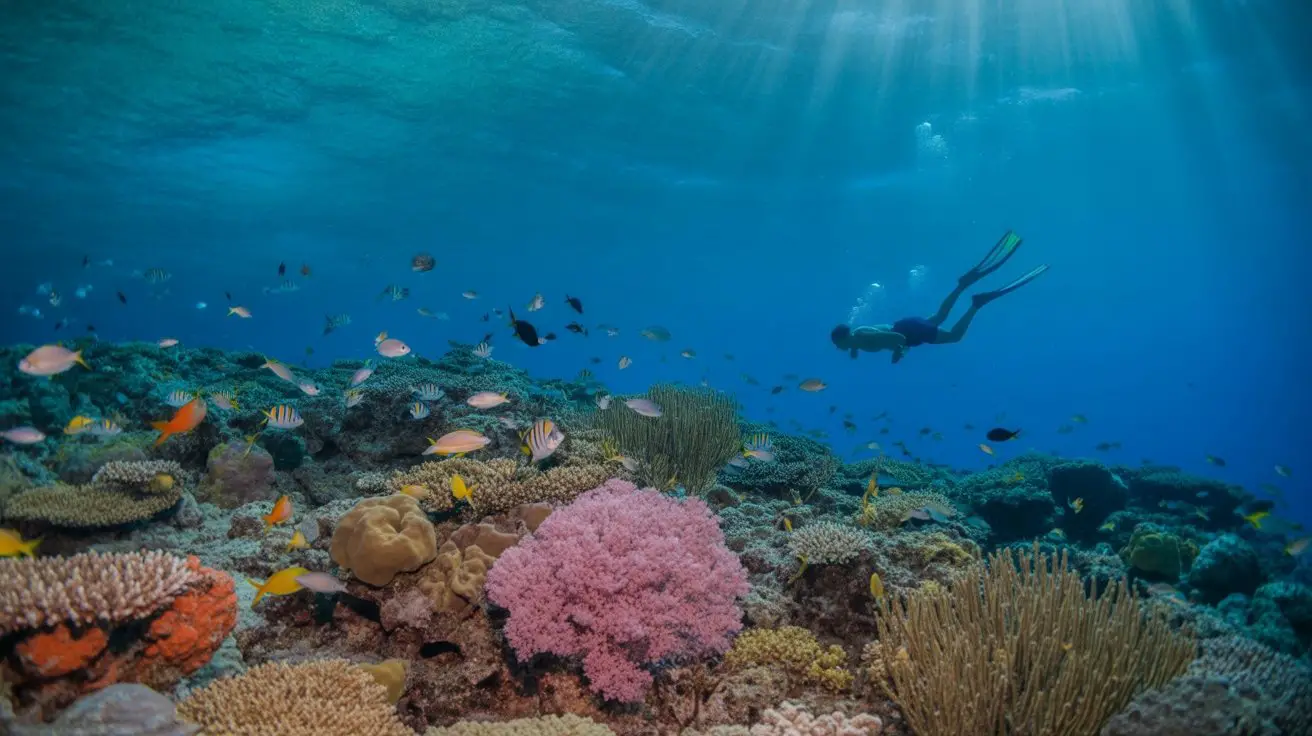
Since establishing extensive protection in 1979, Bonaire Marine Park encompasses the entire 2,700-hectare coastline of this leeward Antillean island, maintaining 86 designated dive sites with documented coral coverage averaging 65% across shallow reef zones.
You’ll encounter pristine fringing reefs starting just meters from shore, where elkhorn and staghorn corals dominate depths of 3-12 meters. The park’s no-anchor policy and stringent mooring regulations have preserved coral structural integrity remarkably well.
| Reef Characteristic | Measurement |
|---|---|
| Average Visibility | 30-45 meters |
| Coral Species Count | 57 documented |
| Fish Species Diversity | 340+ recorded |
| Shore Entry Sites | 63 accessible |
Water temperatures remain consistently between 26-29°C year-round. You can’t collect marine specimens or use sunscreen containing oxybenzone. Park fees directly fund conservation research and reef monitoring programs that track bleaching events and species population dynamics. This initiative aligns with the goals of Marine Protected Areas, underscoring the importance of sustainable practices in marine conservation.
Silfra Fissure, Iceland
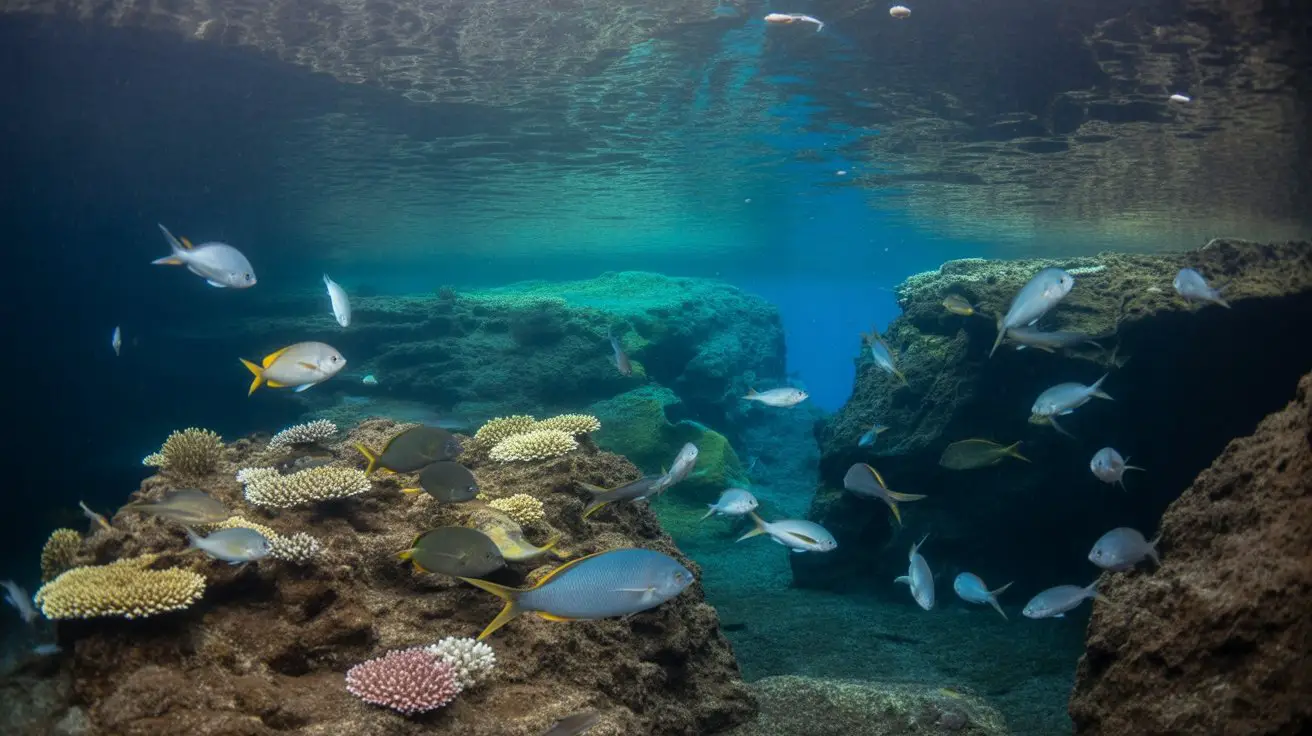
Between the North American and Eurasian tectonic plates lies Silfra Fissure, where glacial meltwater from Langjökull creates underwater visibility exceeding 100 meters—making it arguably one of the most transparent diving and snorkeling sites on Earth.
You’ll experience water temperatures between 2-4°C year-round, requiring specialized drysuits for thermal protection. The fissure’s geological significance extends beyond recreation—it’s actively spreading at 2cm annually as continental plates diverge.
Key features include:
- Pristine water quality: Glacial filtration through porous lava rock removes virtually all particulates
- Unique ecosystem: Minimal marine biodiversity due to extreme conditions and isolation
- Geological formations: Underwater cathedral-like chambers and dramatic rock formations created by tectonic activity
Conservation protocols require certified guides and strict adherence to protected area regulations within Þingvellir National Park, ensuring this UNESCO World Heritage site remains undisturbed for future scientific study and sustainable tourism. Additionally, temperature variations in this unique habitat play a critical role in the survival of its fragile ecosystem.
Red Sea Coral Gardens, Egypt
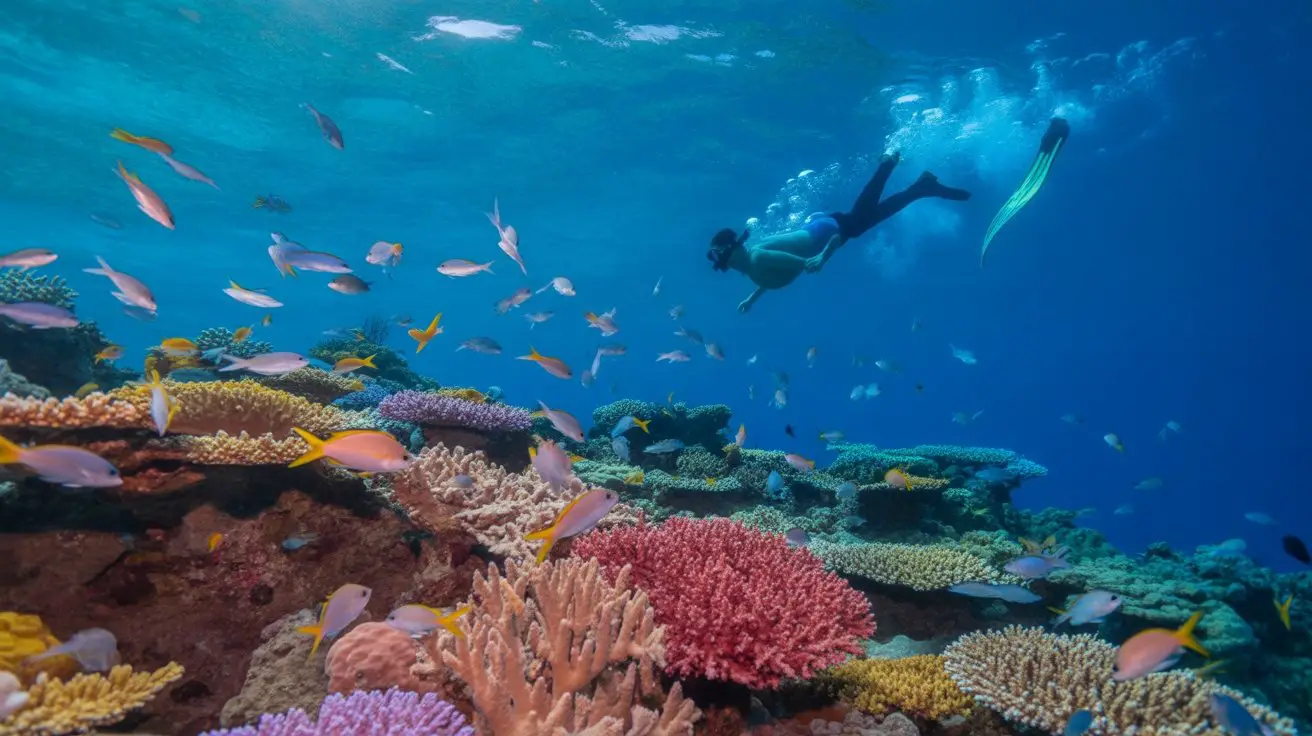
The Northern Red Sea harbors over 200 hard coral species and 1,100 fish species within its remarkably stable marine ecosystem, where water temperatures maintain consistent 21-28°C ranges year-round.
You’ll encounter pristine coral formations at depths of 5-40 meters, with visibility exceeding 30 meters. The region’s unique geographic position creates upwelling currents that deliver nutrient-rich waters, supporting exceptional biodiversity density of 2.5 species per square meter.
However, you’re witnessing a system under pressure. Rising sea temperatures have triggered bleaching events affecting 15% of shallow coral colonies. Coral reefs are vital for oxygen production, which plays a crucial role in sustaining marine life.
Tourism impacts and coastal development threaten fragile reef structures. When you snorkel here, you’re experiencing one of Earth’s most biodiverse marine environments while contributing to conservation efforts through eco-tourism revenue that funds critical protection programs.
Conclusion
You’ve explored nine extraordinary coral reef ecosystems that demonstrate remarkable biodiversity indices and ecological resilience. As marine conservationists say, “you can’t protect what you don’t experience.” Your snorkeling adventures contribute to citizen science data while supporting local conservation economies. Each reef’s unique species assemblages and coral coverage percentages reflect decades of preservation efforts. Remember—your underwater observations and eco-conscious tourism choices directly impact reef survival rates and marine protected area funding for future generations.
